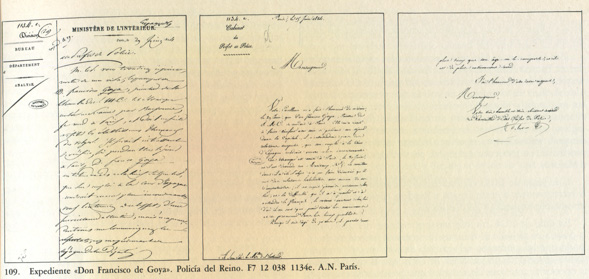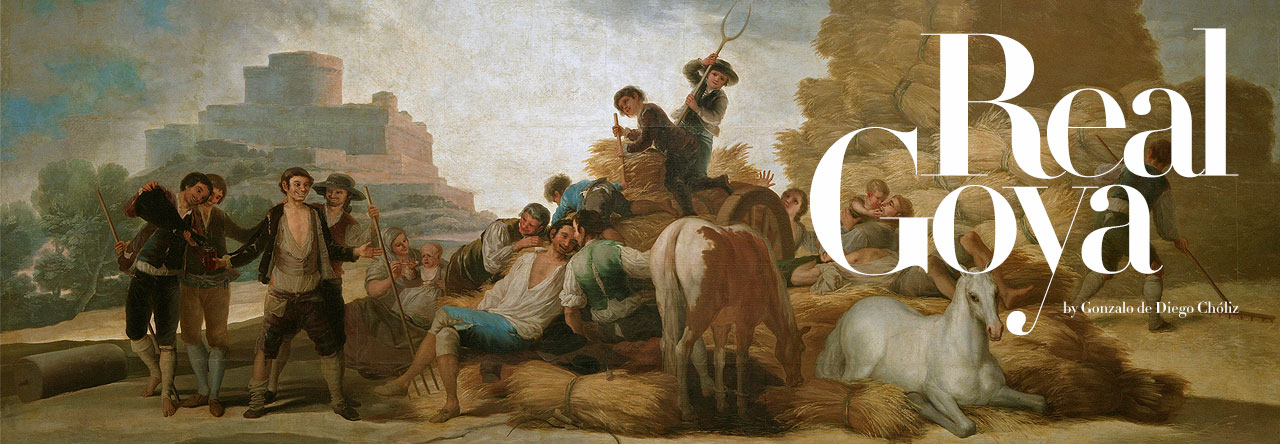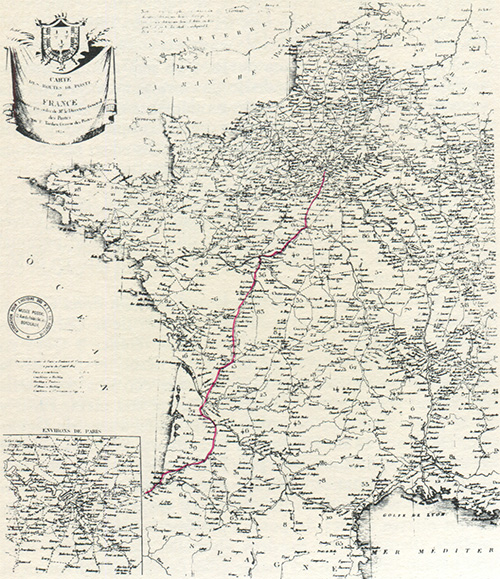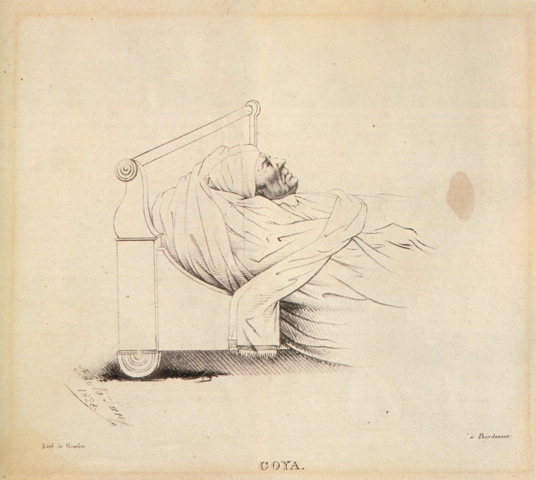It is known that Goya went on May 5th 1820 to the Royal Academy of San Fernando, in Madrid, to swear the Spanish Constitution of 1812. And four years later he departed for France at the age of 78, and according to Moratín, in quite a bad state: “deaf, old, awkward and weak” and also not speaking a word of French. Only a threat to life itself, or the unavoidable need to follow your loved ones, could be enough reasons to uproot his country at such an advanced age.
Plano de rutas de posta de Francia, año 1824. Trayecto seguido por Goya desde la frontera de España hasta París.
Map of France post house routes, year 1824. Route followed by Goya from the border of Spain to Paris.
Thus, the justification for the trip, take the sulphurous waters of Plombières, seems credible and in principle adequate to one older man and broken health, despite with notoriously significant political and religious attitude and mentality. Which does not preclude, however, Francisco de Goya was also the subject of police surveillance in France and there are, in this sense, reports on his behaviour and movements. Indeed is nothing but an exile man who frequents companies considered dangerous in some way, as especially in the cases of his friends Silvela and Moratín. And so is recorded in the departmental records.

Expediente policial sobre Goya.
Police file on Goya.
The police record is preserved (“File Don Francisco GOYA” Police of the Kingdom). Goya is the only Spanish resident in France, civil servant in activity, a Court painter, subjected to surveillance by the French police. The French Minister of Internal Affairs transmits instructions to the prefect of police of Bayonne in which says that “this foreigner who has entered France through Bayonne goes to Paris and should visit the spas of the Vosges”. And he adds that “it would be interesting to check if during his stay in Paris, D. Francisco de Goya has suspicious relations that his employment at the Court would still be more inconvenient. In this regard he will be monitored carefully, but unnoticed, and communicate me the results, preventing me from the moment of his departure.”
Goya en el lecho de muerte. Litografía de Fernando de la Torre.
Goya in her deathbed. Lithograph of Fernando de la Torre.
No more. In essence, Goya will lead a relatively quiet life, in the neighbourhood of his friends and without expressing publicly any political concerns. He will never, at any time, show intention to change of nationality. On the contrary, it remains until his death in Bordeaux faithful to his ideas and his condition of Aragonese and Spanish.
And with regard to Picasso, as we said previously, there is a second report on it, unfavourably to the effects of his French nationalization, dated by the Directorate of General Reports and Game, fourth section, criminal brigade on May 25th 1940. It began stating that Picasso and his wife Olga do not live under the same roof. That he arrived in France in 1900 to study painting, who lives at the address already indicated above and paid 700,000 francs of taxes in 1939.
Also says, among other things, that Picasso is known of its services of having been designated as anarchist (word underlined in the report) in 1905. At that time lived in 103 Boulevard de Clichy, home of a compatriot, Pere Mañach, equally anarchist and guarded by the police prefecture. Indeed, it seems that Mañach was not exactly anarchist, but it had apparently been affected dramatically by mistakes and defeats of their own country (Spain) along the colonial expeditions and in particular in Cuba. But the interpretation that emanates from this section of the report had further consequences, to be marked his name in the “red list” of the prefecture of police that, naturally, will make Picasso someone to watch and which should be wary.
The report continues by pointing out that despite having 30 years old (was 32), he had not rendered any service to France during the war (underlined). He is accused also of have kept his extremists ideas, evolving towards communism (also underlined). And the report adds that during the Spanish Civil War, each month sent large sums of money to the rulers, who had appointed him curator of the Spanish national museums in recognition.
On the third page of the report it says that “on last May 7th, Picasso had been subject of a report stating that he was in a cafe located in the 172 Boulevard Saint-Germain, (Café de Flore), and that had been taken apart by a Polish officer non uniformed, when he openly criticized our institutions and was making apology of the Soviets”. The report continues adding that “Picasso had said many people that their collections would be bequeathed to the Soviet Government (underlined in the report), what shows, even further, that this foreigner has a unique way of thanking the country that has allowed him to achieve an extraordinary situation, which had never happened in Spain”. And that “it seems” that had a deplorable conduct in Paris and who announced openly Communist ideas, and who had pasted on the walls of his father’s flat engravings representing the sickle and the hammer (underlined in the report).
The report concludes by saying that from the set of information collected “this foreigner has no title (merit) to obtain naturalization” (underlined) and should be considered “suspect from the national point of view” (underlined).
Signed “P of P”, has no signature and on it is evident that the political point of view is crucial. It is, in fact, a report by political police that is pronounced, somehow, based on the past and the present politician of Picasso. Finally, it is interesting to point out that the Communist Party was banned from September 26th 1939, then of the Soviet-German pact, and that the prefecture of police, since the end of 1939, released a policy of anti-communist repression, and Picasso is regarded more as a notorious communist as a travelling companion, which somewhat says more about the mood of the French authorities in 1940, than the one of Picasso, who was already a world celeb, highly quoted and recognized. So France lost the possibility of counting among his countrymen with one of the biggest, if not the best painter.
This way is rejected the claim of Picasso and his, don’t know if embarrassed or hurt in love himself, thereafter practice the most hermetic silence on this matter and, certainly, will show much more fervent of their status as Spanish.
He died on April 8th 1973 in Mougins and is buried in the Château of Vauvenargues on April 10th.
With his death leaves 1,880 paintings, 1,335 sculptures, 7,089 drawings, 200 notebooks (containing 5,000 sketches), 880 ceramics and around 20,000 engravings.
Gonzalo de Diego



Leave a Reply